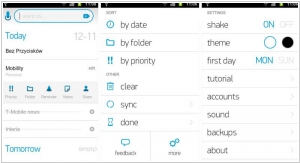Any.do vs Google Keep
September 10, 2023 | Author: Adam Levine
15
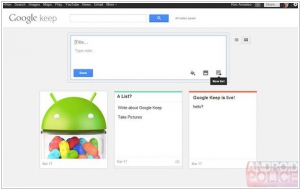
Cloud-based note taking service designed to help people keep track of their thoughts, scribbles and notes. With Keep you can quickly jot ideas down when you think of them and even include checklists and photos to keep track of what’s important to you. Your notes are safely stored in Google Drive and synced to all your devices so you can always have them at hand. Available on Android
Any.do and Google Keep are two popular productivity apps with distinct features and strengths. Any.do is a comprehensive task management application that offers a wide range of features such as creating to-do lists, setting reminders, and organizing tasks into categories. It also integrates with calendars, provides cross-platform synchronization, and supports collaboration with team members. On the other hand, Google Keep focuses more on note-taking and capturing ideas, allowing users to create text notes, voice memos, and even draw sketches. It offers a simple and intuitive interface, seamless integration with other Google services, and synchronization across devices. While Any.do excels in task management and organization, Google Keep is great for quick note-taking and capturing thoughts on the go.
See also: Top 10 Productivity software
See also: Top 10 Productivity software
Any.do vs Google Keep in our news:
2023. Google Keep finaly introduces text formatting support
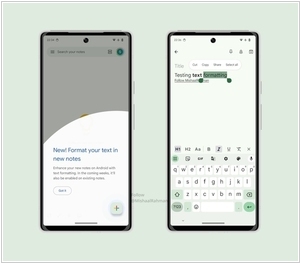
Google has finally introduced a much-needed improvement to its note-taking platform, Google Keep. When you click on the plus sign to access the extended options, a distinct underlined icon resembling the letter "A" appears in the toolbar. This icon provides access to various formatting choices, such as H1 and H2 for different heading sizes. Additionally, the "Aa" option conveniently returns the text to its default format. Other formatting features, including bold, italics, underlining, and strikethrough, are also available. Another new feature known as "version history" is now available in the web version of Keep. This feature allows users to review previous versions of text-based revisions, excluding any images. It's important to note that this version history feature is specifically designed for text-based notes and currently does not support notes containing images in any form.
2023. Google Keep adds version history
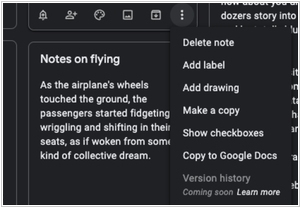
Google Keep, the free note-taking application from Google, allows users to quickly jot down notes that seamlessly sync with Gmail. However, in comparison to other popular note-taking apps, Keep has a notable limitation—it lacks the capability to display the version history of your notes. Consequently, any modifications made to a note become irreversible. The good news is that this is about to change. Upon visiting Keep's web version at keep.google.com, selecting a note, and accessing the three dots menu at the bottom, a forthcoming feature called "version history" can be observed. Although currently grayed out with a "coming soon" label, according to Google's help document, this option will soon enable users to download a text file containing previous versions of their notes or lists, providing a comprehensive view of changes made over time.
2022. Google is adding new Drive, Docs, Sheets, Slides and Keep optimizations for tablets
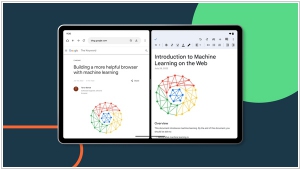
Google unveiled Android 12L earlier this year, aiming to enhance the usability of tablets. During the I/O conference, the company revealed its intention to optimize over 20 Google apps for larger screens. Today, Google has introduced several new features for Drive, Docs, Sheets, Slides, and Keep, taking a step towards fulfilling this commitment. The most noteworthy feature announced is the ability to effortlessly drag text or images between two Workspace apps that are open side-by-side. Google highlights that users can now drag content from apps like Chrome or Sheets and drop it directly into an existing document or spreadsheet cell. Additionally, in Google Drive, files can be swiftly uploaded by dragging and dropping them into the app. Furthermore, links to Drive files can be easily added by dragging the file into an open app like Keep.
2017. Google Keep joins G Suite, gets integration with Docs
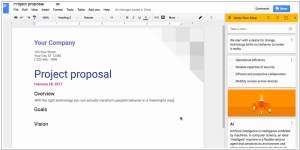
Google Keep, a note-taking app that competes with Evernote and Microsoft's OneNote, has now been integrated into Google's suite of business applications, G Suite. Additionally, Google Keep is now seamlessly integrated with Google Docs, allowing users to easily drag and drop notes from Keep into their work documents. This feature is currently available exclusively on the web and requires the user to have Docs loaded and open in their browser. To access the Keep notepad, users can navigate to the Tools menu, which will display the Keep notes within a sidebar in the Docs user interface. From there, users can effortlessly retrieve notes, including images and checklists, and insert them directly into their document. Furthermore, users have the ability to search their Keep notes directly from Google Docs and even create new notes in Keep while working within Docs.
2016. Google Keep gets support for #labels (hashtags)
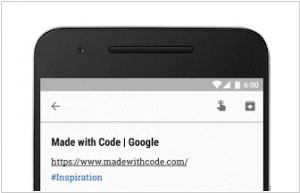
The note-taking app Google Keep has introduced a convenient way to organize and categorize notes using #hashtags. This new feature enables users to easily keep track of various items, such as to-do lists for a #trip or a collection of favorite #recipes. Additionally, the app now offers a Chrome extension that allows users to swiftly add webpages to their notebooks. With a simple click on the Keep badge, users can add a link to a note from any website, or they can create a new note directly from the right-click menu by selecting text or an image.
2015. To-do app Any.do 3.0 adds collaboration features
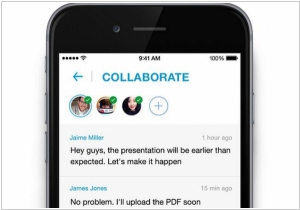
Any.do has introduced version 3.0 of its app for iPhone, Android, Web, Chrome, and Mac, packed with over 150 new features. Notably, this release includes dedicated support for Android tablet users. One of the standout additions is a dynamic zooming feature that enables users to navigate seamlessly between multiple to-do lists, swiftly zooming in on a specific list of interest. Any.do has leveraged fluid gestures to enhance accessibility and streamline task management. Furthermore, the app now allows collaboration across different types of groups. Similar to Evernote's approach of unifying personal and business documents within a single identity, Any.do enables users to share lists as side projects, collaborate with work teams, or include household members. Shared list participants gain editing privileges, ensuring efficient collaboration and task completion.
2014. Task manager Any.do rolls out business version with collaboration features
The productivity service, Any.do, is expanding its offerings beyond its initial consumer focus by introducing a new set of features and pricing plans tailored for businesses. In the latest release, Any.do 2.0, colleagues and teams can utilize Any.do's task list application to collaborate on tasks, share files, and more. These advanced features will be available in both the free version and the premium version of Any.do 2.0. The premium version will be a subscription-based service priced at $5 per month or $45 per year. Free users will have the ability to collaborate with up to two members per task, while paid users can collaborate with an unlimited number of people. Additionally, free users will be limited to file uploads of a maximum of 5 MB from Dropbox and can only share five "Moments" (Any.do's daily planner) per month. In contrast, paid users will not have such restrictions on file uploads and sharing.
2014. Any.do unveils a browser-version of its to-do list app
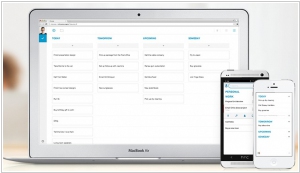
The mobile task list application Any.do has recently introduced a free web-based version that seamlessly synchronizes tasks across multiple devices. The web application offers different viewing modes, allowing users to see tasks either in a single column or across all folders simultaneously. If you are familiar with Any.do's mobile apps, you will find the web version quite intuitive. The primary objective is to provide accessibility to your task list from anywhere, with the web platform playing a vital role in achieving this goal. Upon launching the new web experience, you will be presented with a list of pending tasks. However, there are additional features to explore. Any.do has incorporated two modes specifically designed to take advantage of the spacious screen offered by a full web browser.
2013. Google Keep adds location-based reminders
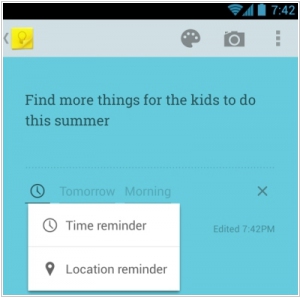
If you are responsible for managing a business or a department within a company, chances are you have numerous tasks to remember and may rely on a reminder application. One such example is Google Calendar, which can send you emails or SMS notifications to remind you of important events like birthdays, client calls, or advertising payments. However, if you utilize the online note-keeping application Google Keep, you can take advantage of a different type of reminder called a "location-reminder." This feature triggers a notification on your phone when you arrive at a specific place. For instance, you can set a reminder to send an email once you arrive at your office, purchase printer paper upon entering a store, or visit a customer when you arrive in London. It's worth mentioning that Google Keep now also offers the traditional time-based reminders in addition to these location-based reminders.
2013. Google trolls users. Launches online notebook Google Keep
Google has launched a new service - Google Keep. It's an online notebook, where you can add notes (text, pictures, lists). It works in browser and on Android. It doesn't provide any way to organize the notes (no folders, tags), you can't insert links in note and share notes. But it can transcript speech to text on the fly (on different languages). In general, it's the alternative to Evernote with its advantages and disadvantages. But, of course, in light of the recent events, it's interesting to know, why this service appeared. As you know, Google provided the similar service in the past - Google Notebook. It was even better than Evernote and only missed mobile app. It had many users. But then it was closed. ***

